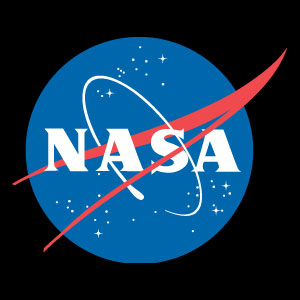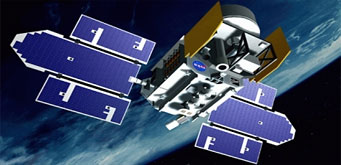The White House hopes to increase NASA's Earth-science activities by $1.2 billion over five years, according to the 2010 NASA budget request announced on May 7th. Planetary science would see a more modest increase.

Yeah, that will look nice on my computer's desktop.
NASA
The budget request represents an overall increase for NASA of $903.6 million, or 5 percent, above funding provided in the fiscal year 2009 Omnibus Appropriations Act. All told, an additional $2 billion has been added to NASA’s 2009 and 2010 budgets under the Obama administration.
A big emphasis is on Earth science. Under the proposal, NASA's Earth observation program would outstrip that of its planetary science division by late 2013.
Details of the administration's plans for NASA are contained in the budget request to Congress, just released by the White House Office of Management and Budget. A total of $18.7 billion is asked to fund NASA in the 2010 fiscal year, which begins in September 2009.
More than half of this funding will go toward human space exploration. Some $6.2 billion will go toward the International Space Station and the space shuttles, which are set to be retired in 2010. One more shuttle flight could be added to the launch lineup, to install a long-mothballed, $1.5-billion telescope called the Alpha Magnetic Spectrometer on the space station. That mission could be flown after the flights already planned "if it can be safely and affordably completed in calendar year 2010," budget documents say.
Another $3.5 billion would be used to continue the new Constellation rocket program, which is developing next-generation vehicles to take astronauts to the space station and the Moon. But the budget says the Constellation funding levels are placeholders that could change once the findings of a newly announced independent review panel are released in two to three months. The administration may be rethinking the Bush Administration's goal of building a substantial Moon base.
Under the president's budget, NASA would receive $4.5 billion in 2010 for science, a $26 million decline from 2009 funding levels passed by Congress. But NASA's science directorate also received a $400 million boost in the economic stimulus package passed earlier this year.
The longer-term projections in the science budget also include an increase. "We're very pleased with this budget," Ed Weiler, the associate administrator for the agency's science mission directorate, told reporters on Thursday.
Between fiscal year 2009 and fiscal year 2013, the agency would get some $1.2 billion more for science, including stimulus money. "Over those five years, we're seeing an extra $1.2 billion over the budget we had last year. This increase is entirely in the Earth-science arena," Weiler told reporters. According to the request, funding for NASA's Earth science program would increase to $1.65 billion beginning in late 2013.

The launch of NASA's ICESat (Ice, Cloud,and land Elevation Satellite) would be speeded up under the Obama administration's proposed budget.
NASA
Accelerated Launches
The boost will help speed up the schedules of two Earth-observing satellite missions by one year, Weiler said. The Soil Moisture Active and Passive mission, which measures soil moisture levels globally, would launch as early as 2013. ICESat-II, which will track changes in ice cover at the poles, could launch as early as 2014. Both missions were identified as priorities in an independent 2007 report.
But the fate of some other proposals is still being considered. The agency has not yet reached a decision on whether to fund a replacement for the Orbiting Carbon Observatory, a satellite that would have taken detailed measurements of where carbon is released and absorbed. The probe was lost in a rocket failure earlier this year.
Elsewhere in the solar system, the budget proposal supports the Outer Planets Flagship Mission to Europa, Jupiter's ice-crusted, oceanic moon.
NASA is still considering a proposal to extend the Cassini mission at Saturn, which is set to end its current mission in 2010. The extension would last for 7 years, allowing the probe to continue watching Saturn and its moons as spring comes to Saturn's northern hemisphere for the first time in 30 years. Cassini has already outlasted its original 4-year mission at Saturn and continues in excellent working condition.
The Planetary Society, which advocates for space exploration and colonization, hailed the budget annoucement, saying it "could rejuvenate space exploration."
See NASA's press release about the budget proposal.
Courtesy New Scientist and other sources.
 0
0
Comments
You must be logged in to post a comment.